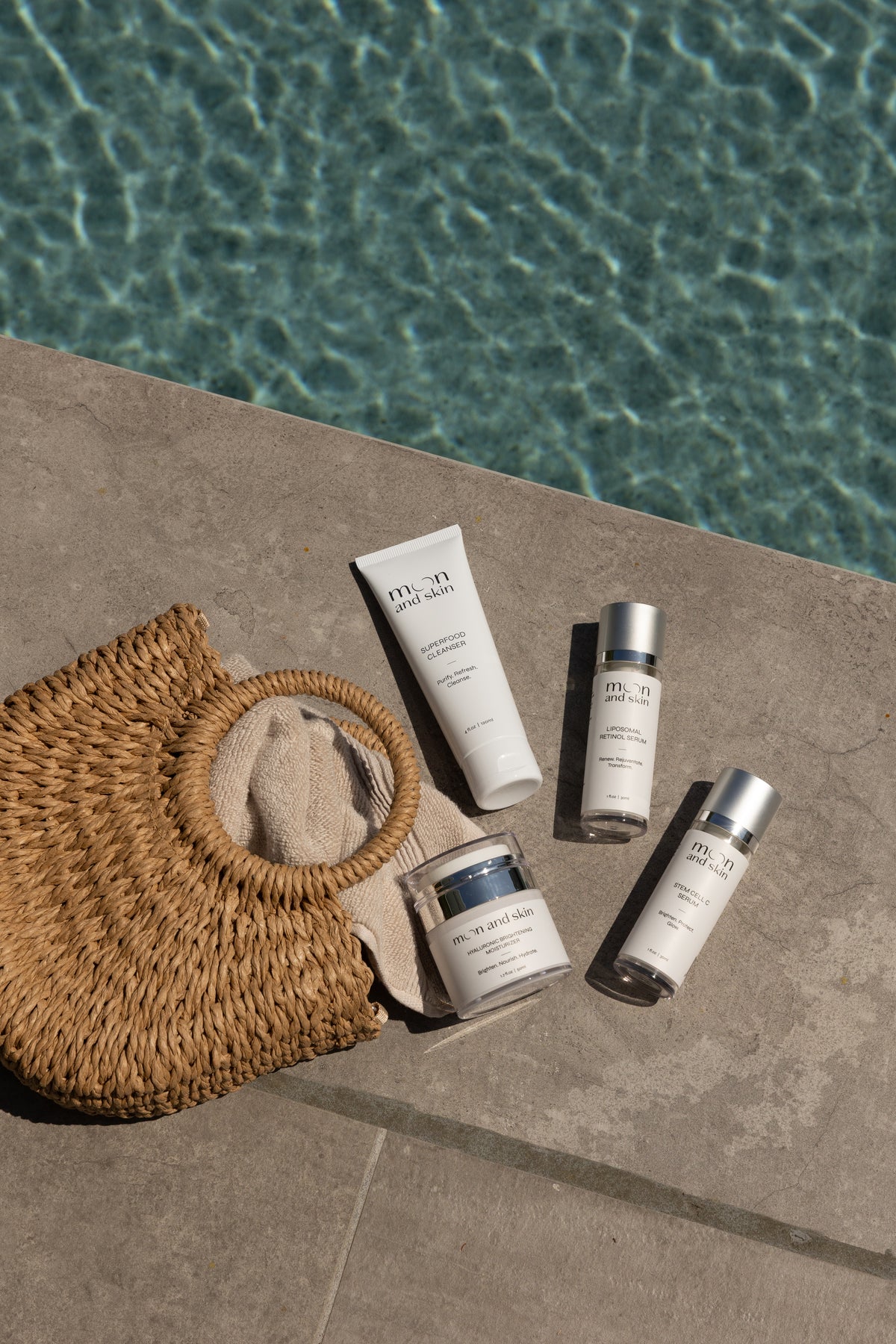Table of Contents
Introduction
Did you know that our skin can lose up to 25% of its moisture on a dry day? This stark reality highlights the importance of hydration in our skincare routines. As we navigate the ever-evolving landscape of skincare, finding effective, clean, and budget-friendly solutions becomes essential for maintaining healthy skin. Today, we want to share with you a simple yet powerful ingredient that can transform your skincare routine: glycerin.
Glycerin, a natural humectant derived from vegetable oils, offers incredible moisture-retaining properties that benefit all skin types. At Moon and Skin, we believe in harnessing the power of nature to provide thoughtful skincare solutions for every phase of life. In this post, we will guide you through the process of making your very own glycerin-based moisturizer. We’ll explore its benefits, discuss various recipes, and even touch upon how our products can complement your homemade creations. Together, we’ll delve into the world of glycerin, ensuring you have all the information you need to enhance your skincare routine.
What is Glycerin?
Glycerin, also known as glycerol, is a colorless, odorless, and viscous liquid that is derived from vegetable oils. It is a natural byproduct of soap making and can be found in various beauty and cosmetic products. Glycerin is renowned for its ability to draw moisture from the air and lock it into the skin, making it an ideal ingredient for moisturizers.
Benefits of Glycerin for the Skin
- Hydration: Glycerin’s primary function is to act as a humectant. It attracts water from the environment into the skin, providing deep hydration and leaving your skin feeling plump and soft.
- Skin Barrier Function: By keeping moisture locked in, glycerin strengthens the skin’s barrier, helping to protect it from environmental stressors and preventing moisture loss.
- Non-Irritating: Glycerin is gentle and suitable for all skin types, including sensitive skin. Its calming properties help reduce irritation and redness.
- Improved Skin Texture: Regular use of glycerin can smooth the skin’s surface, reducing the appearance of fine lines and giving a more youthful appearance.
- Natural and Eco-Friendly: As a plant-derived ingredient, glycerin is a clean, sustainable option for your skincare routine.
Why Make Your Own Glycerin Moisturizer?
Creating your own glycerin moisturizer allows you to customize your skincare routine to meet your specific needs. By using simple, natural ingredients, you can avoid the synthetic additives and preservatives often found in commercial products. Additionally, you can tailor the scent and texture to your liking, making it a fun and rewarding DIY project.
How to Make Moisturizer with Glycerin
Making your own glycerin moisturizer is straightforward and requires minimal ingredients. Here, we will outline a basic recipe and then explore some variations to suit different skin types and preferences.
Basic Glycerin Moisturizer Recipe
Ingredients:
- 1 part vegetable glycerin
- 4 parts distilled water
- Optional: A few drops of essential oil for fragrance (such as lavender or tea tree)
Instructions:
- Combine Ingredients: In a clean spray bottle or mixing bowl, combine the glycerin and distilled water. If you wish to add essential oils for fragrance, now is the time to include them.
- Mix Well: Shake the bottle gently or stir the mixture until it is well combined.
- Transfer to Bottle: If using a bowl, carefully pour the mixture into a spray bottle for easy application.
- Application: To use, spritz the mixture onto your skin and rub it in. It can be applied to both the face and body.
- Storage: Store your homemade moisturizer in a cool, dark place. It should last for several months, especially if you use distilled water.
Tips for Using Glycerin Moisturizer
- Dilution: Glycerin can be sticky when used alone, which is why diluting it with water is essential for comfortable application. The recommended ratio of 1:4 keeps it effective without being overly sticky.
- Misting: Using a mist bottle can make application more enjoyable, allowing for an even and gentle distribution across the skin.
- Distilled Water: Always opt for distilled water, as it is purified and will help extend the shelf life of your homemade moisturizer.
Variations of Glycerin Moisturizer
Now that you have the basic recipe, let’s explore some variations you can try based on your skin type and preferences.
1. Glycerin and Rose Water Moisturizer
Ingredients:
- 1 part vegetable glycerin
- 4 parts rose water
Rose water not only adds a lovely scent but also provides additional hydration and soothing properties, making it perfect for sensitive skin.
2. Glycerin and Aloe Vera Gel Moisturizer
Ingredients:
- 1 part vegetable glycerin
- 1 part aloe vera gel
- 2 parts distilled water
Aloe vera is renowned for its healing properties and can help soothe irritated skin while providing hydration.
3. Glycerin and Coconut Oil Moisturizer
Ingredients:
- 1 part vegetable glycerin
- 1 part coconut oil (melted)
- 2 parts distilled water
Coconut oil is an excellent emollient that provides additional moisture and creates a protective barrier on the skin.
Enhancing Your Glycerin Moisturizer with Moon and Skin
While homemade moisturizers can be incredibly effective, our products at Moon and Skin can complement your efforts beautifully. For instance, consider incorporating our Hyaluronic Brightening Moisturizer after applying your glycerin moisturizer. This product is designed to deeply hydrate and brighten your skin, ensuring you achieve a radiant complexion. You can explore our full collection here to discover how to enhance your skincare routine.
Conclusion
Creating a homemade glycerin moisturizer is a simple and rewarding way to hydrate your skin while tailoring products to fit your unique needs. By understanding the benefits of glycerin and incorporating it into your skincare regimen, you can achieve a healthy, glowing complexion.
At Moon and Skin, we are committed to providing clean, thoughtful skincare for every phase of life. Whether you choose to make your own glycerin moisturizer or enhance your routine with our products, we believe that every step you take toward understanding your skin is a step toward empowerment. Explore our Bundle & Save collection here to build a complete skincare routine that works harmoniously with your homemade creations.
FAQ
1. Can I use glycerin moisturizer every day? Yes, glycerin is gentle enough for daily use. Apply it as needed to maintain hydration.
2. Is glycerin safe for all skin types? Absolutely! Glycerin is suitable for all skin types, including sensitive skin.
3. How long does homemade glycerin moisturizer last? When stored properly in a cool, dark place, it can last several months.
4. Can I add other ingredients to my glycerin moisturizer? Yes! Feel free to customize your moisturizer with essential oils or other hydrating ingredients.
5. Where can I buy vegetable glycerin? Vegetable glycerin is widely available at drugstores, health food stores, or online retailers.
By making your own glycerin moisturizer and exploring our thoughtfully crafted products, you’re taking proactive steps toward nurturing your skin. We’re excited for you to embark on this journey with us!







